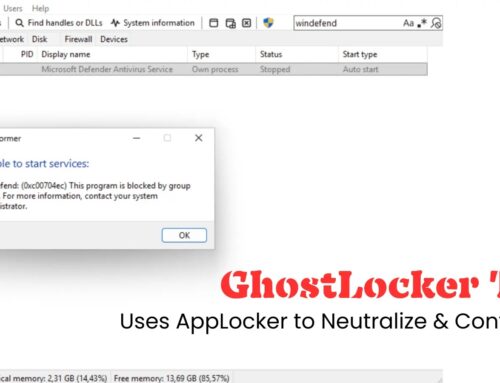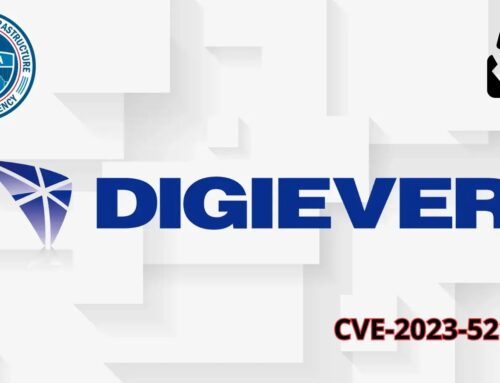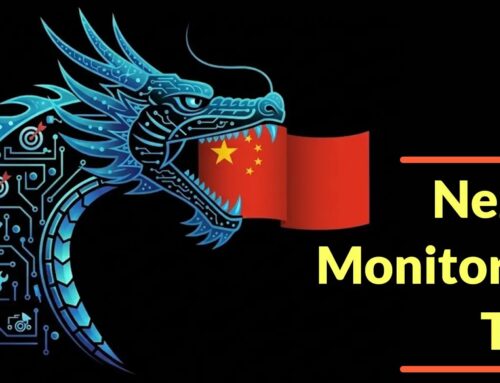
GLOBAL GROUP’s Golang Ransomware Attacks Windows, Linux, and macOS Environments
The Rise of GLOBAL GROUP: A New Golang Ransomware Threatening Cross-Platform Environments
In the relentless landscape of cyber threats, a sophisticated new adversary has emerged, casting a wide net across Windows, Linux, and macOS operating systems. This isn’t just another ransomware variant; it’s a meticulously crafted threat, leveraging the power of Golang to achieve unparalleled cross-platform capabilities. Organizations worldwide must take immediate notice of GLOBAL GROUP, a Ransomware-as-a-Service (RaaS) platform poised to inflict significant disruption and data loss.
Introducing GLOBAL GROUP: A Cross-Platform RaaS
The cybercriminal underground recently witnessed the debut of GLOBAL GROUP, a potent Golang-based ransomware. First introduced in June 2025 by a threat actor known as “Dollar Dollar Dollar” on the notorious Ramp4u cybercrime forum, GLOBAL GROUP was marketed as a cutting-edge RaaS platform designed for scalability and broad reach. Golang (Go) is increasingly favored by malicious actors due to its ability to compile into single, self-contained binaries that can run on various operating systems without relying on platform-specific libraries. This inherent cross-platform compatibility makes GLOBAL GROUP a particularly dangerous tool in the arsenal of cybercriminals.
Technical Capabilities and Modus Operandi
GLOBAL GROUP distinguishes itself through its multi-OS targeting capability. Unlike many ransomware families that focus on a single operating system, this Golang variant is engineered to compromise Windows, Linux, and macOS environments with equal efficacy. This means a single RaaS offering can be deployed against diverse organizational infrastructures, amplifying its potential for impact. Affiliates utilizing GLOBAL GROUP are promised a robust platform for launching highly effective ransomware campaigns, ranging from encrypting critical business data to exfiltrating sensitive information for double extortion schemes.
The RaaS Model: A Force Multiplier for Cybercrime
The Ransomware-as-a-Service model significantly lowers the barrier to entry for aspiring cybercriminals. GLOBAL GROUP’s availability as a RaaS means that individuals or groups lacking advanced technical expertise can readily access sophisticated ransomware capabilities. The RaaS provider, in this case, “Dollar Dollar Dollar,” handles the development, infrastructure, and updates of the ransomware, while affiliates focus on distribution and victim negotiation. This division of labor fosters a highly efficient and adaptable cybercriminal ecosystem, making attribution and prevention more challenging for defenders.
Remediation Actions and Proactive Defenses
Organizations must adopt a multifaceted approach to defend against cross-platform ransomware like GLOBAL GROUP. Proactive measures are critical to minimizing the attack surface and mitigating potential damage.
- Implement Robust Backup Strategies: Regularly back up all critical data to isolated, off-site, and immutable storage. Test restoration procedures frequently to ensure data integrity and recoverability.
- Maintain Comprehensive Patch Management: Promptly apply security patches and updates to all operating systems, applications, and network devices. Ransomware often exploits known vulnerabilities; addressing these closes common entry points.
- Strengthen Endpoint Security: Deploy advanced endpoint detection and response (EDR) solutions on all devices (Windows, Linux, macOS). These tools can detect and block malicious activity, including file encryption attempts and unauthorized access.
- Network Segmentation: Segment networks to limit lateral movement. If one part of the network is compromised, segmentation can prevent the ransomware from spreading rapidly across the entire infrastructure.
- Implement Least Privilege Principles: Grant users and applications only the minimum necessary permissions required for their tasks. This limits the damage an attacker can inflict by compromising a single account or system.
- Enhance Identity and Access Management (IAM): Implement strong password policies, multi-factor authentication (MFA) for all critical systems, and regular reviews of user access rights.
- Conduct Regular Security Awareness Training: Educate employees about phishing, social engineering, and other common attack vectors. A well-informed workforce is a critical line of defense.
- Utilize Threat Intelligence: Stay informed about emerging threats like GLOBAL GROUP. Leverage threat intelligence feeds to update security controls and detection mechanisms.
Conclusion: Adapting to the Evolving Threat Landscape
The emergence of GLOBAL GROUP’s Golang ransomware underscores a critical trend in cybersecurity: the increasing sophistication and cross-platform capabilities of malicious actors. Organizations can no longer afford to secure only specific operating systems; a holistic and adaptive defense strategy encompassing all IT environments is paramount. By prioritizing proactive defenses, comprehensive security measures, and continuous vigilance, businesses and individuals can significantly reduce their exposure to this evolving ransomware threat and safeguard their digital assets.





